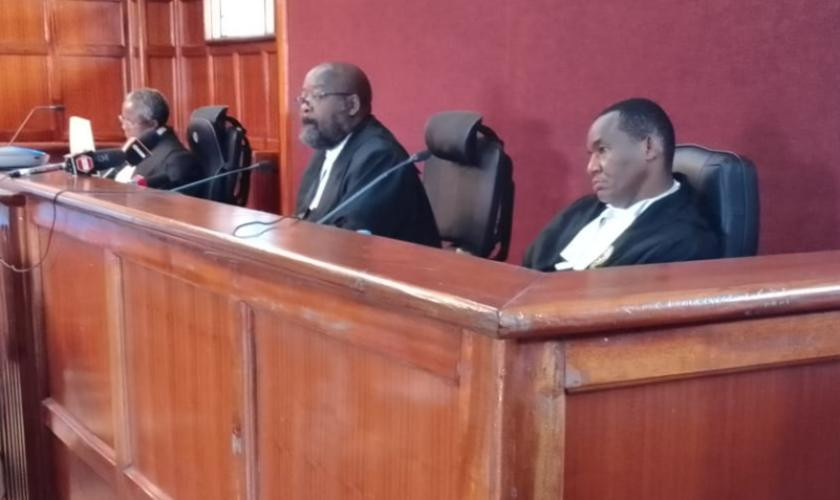
NAIROBI: The Kenya Revenue Authority (KRA) has been implementing new excise duty stamps through the Excise Goods Management System (EGMS) for beer, mineral water, juices and soft drinks. The excise duty stamps, were rolled out in 2013 and initially focused on tobacco products, wines and spirits.
The new EGMS system is designed such that details of each excise stamp appended on a product at the point of manufacture, are captured by the system at the time of printing and then tracked along the supply chain right from the production facility.
This way KRA has an insight into a manufacturer’s inventory and is able to identify the point(s) of revenue loss in case the stamps are lost or stolen. Each stamp also has a special security colour and bar code to beat counterfeits.
These new excise stamps bear a Quick Response Code (QR Code) that will enable distributors, retailers and consumers to authenticate the legitimacy of the products using a regular Smartphone. KRA believes it will greatly reduce illicit trade and seal revenue loopholes.
In introducing a Smartphone application, KRA expects to empower manufacturers, distributors, retailers and consumers with the ability to verify and trace the products. The stamp checker application from KRA can be easily downloaded free from Google Playstore.
Kenya is not the only country to have adopted such an excise stamps system. The United States of America, Turkey and Brazil have successfully implemented it.
Because of its sheer magnitude, Kenyan institutions rolling it out need to consult widely so that the adoption of this system can be seen as value addition to the manufacturing process rather than a punitive, unreasonable measure.
For the Government, the new system has so far shown that it can deliver desired results, at least on the revenue front. The system’s initial implementation phase is credited with raising KRA’s excise tax collection.
According to the authority, excise revenues collected in the financial period 2015/16 grew by 28 per cent. In the same period, domestic excise revenue from products controlled under EGMS rose by 43 per cent, totaling to an additional Sh8 billion, the highest ever recorded annual growth.
Although the introduction of this new excise system is a great move towards sealing revenue loopholes and identifying counterfeit products, the reality is that implementing it fully will come at a steep cost to manufacturers of the excisable products. There are two costs- one is modifying existing production equipment to be compatible with the EGMS system and two is the stamp price of Sh1.50 for every unit produced.
It stands to reason that these additional costs are likely to be passed on by manufacturers to consumers by way of higher product prices, rendering them uncompetitive in a market that is very price sensitive. Furthermore, these are seen as fixed costs for the producer. Businesses prefer to have as few fixed costs as possible.
Industry players under the auspices of the Kenya Private Sector Alliance (KPSA) recently sought to get the National Assembly Public Investment Committee (PIC) to annul the EGMS implementation on grounds including insufficient consultation, inappropriateness of the system for low priced excise products and lack of a valid justification for collecting stamp fees at Sh1.50 per product unit.
The players contend that any cost of tax administration borne by the manufacturer should be passed over in price increases of consumer goods. They also insist that implementing the new system portends serious operational and investment challenges including high installation costs, lack of local available technical capacity to operate the system and long downtime that average 5 hours in a week.
The question is why should consumers bear the brunt of additional price increases as a result of a tax administrative measure? The solution ultimately should not be painful to both the manufacturer and the consumer.
Thus, the Parliamentary Public Investments Committee has directed National Treasury officials to place the implementation of the System on hold until the Committee finalises its investigations. Subsequently, Treasury has asked KRA not to implement the EGMS on bottled water, juice and soft drinks until a suitable stamp pricing model is agreed upon with manufacturers.
Stay informed. Subscribe to our newsletter
As much it is important for the KRA and Treasury to implement the new system – it is critical to find a balance so that the new system does not unnecessarily increase the cost of doing business for manufacturers. We can only hope that consumers will not bear the full brunt of the government’s determination to raise excise tax collection.
 The Standard Group Plc is a
multi-media organization with investments in media platforms spanning newspaper
print operations, television, radio broadcasting, digital and online services. The
Standard Group is recognized as a leading multi-media house in Kenya with a key
influence in matters of national and international interest.
The Standard Group Plc is a
multi-media organization with investments in media platforms spanning newspaper
print operations, television, radio broadcasting, digital and online services. The
Standard Group is recognized as a leading multi-media house in Kenya with a key
influence in matters of national and international interest.
 The Standard Group Plc is a
multi-media organization with investments in media platforms spanning newspaper
print operations, television, radio broadcasting, digital and online services. The
Standard Group is recognized as a leading multi-media house in Kenya with a key
influence in matters of national and international interest.
The Standard Group Plc is a
multi-media organization with investments in media platforms spanning newspaper
print operations, television, radio broadcasting, digital and online services. The
Standard Group is recognized as a leading multi-media house in Kenya with a key
influence in matters of national and international interest.










